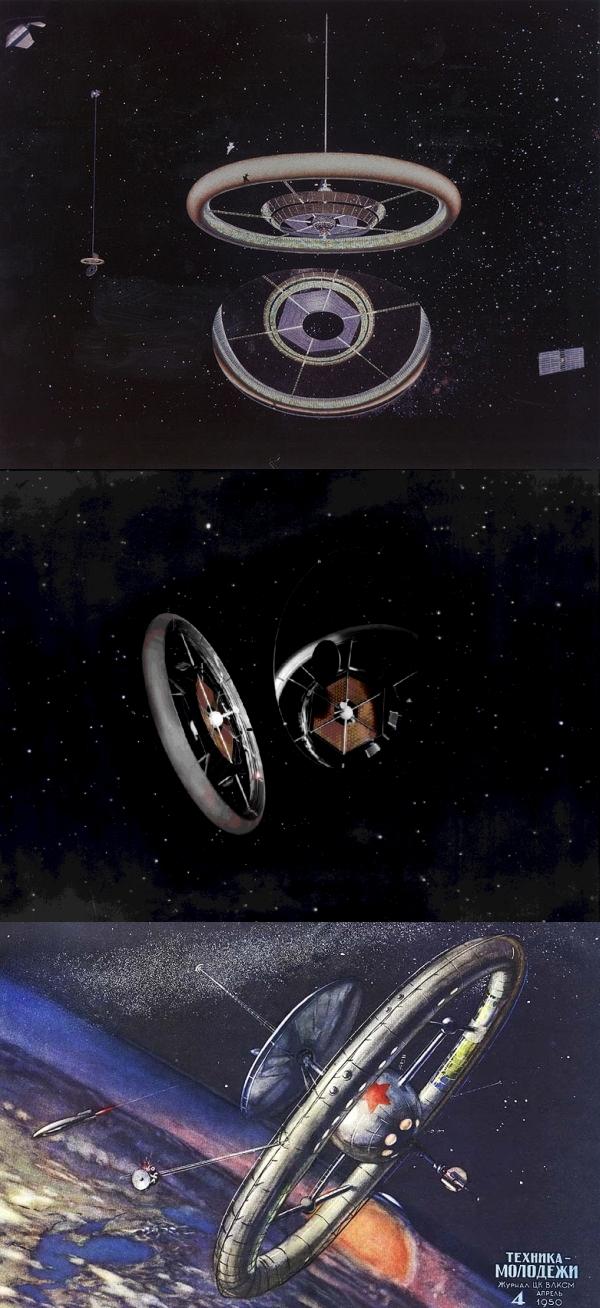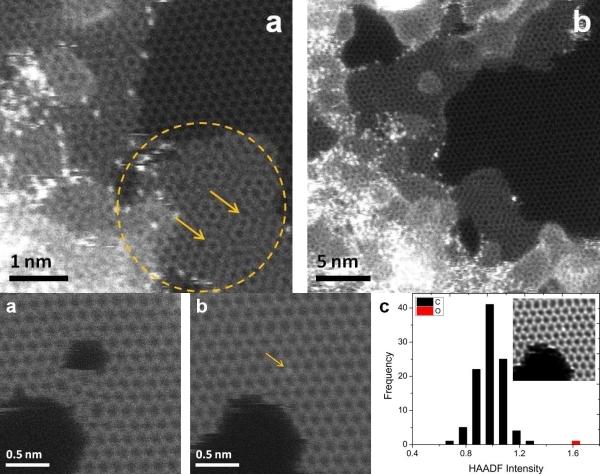NASA space settlements eyes
 Bashny.Net
Bashny.Net

While Planetary Resources has only recently announced their intention to do the extraction of platinum and increasingly expensive rare earth elements on asteroids, NASA back in 1975, in conjunction with Stanford University (USA) theoretically investigate the problem.
The Agency concluded that the cost-effective development of asteroid material it must be delivered into Earth orbit or prilunnuyu where processing will take over real space colony of at least 10 thousand. Man. The residence time of the settlement in space experts have estimated as unlimited. Conceptual study of the project was carried out at a high level and has not lost relevance today.
In this regard, NASA conducted a theoretical study of the problem of unlimited residence time of the spacecraft with tens of thousands of people on board in the near-Earth space or prilunnom. The aim was to prepare for the creation of large space stations involved including the processing of asteroid material. Another equally important task could become the colonization of the moon or other parts of the solar system.
Sounds like a sci-fi story, but in the mid-1970s, NASA really seriously tackle the problem. And we would not return to this subject today if not for the efforts in recent years interest in the then report. Oddly, no other major research on this topic is still no. And it seems that the author wrote in the 70's working very deeply penetrated into the task, at least they managed to avoid many mistakes developers "Biosphere 2».
We recall that in the West in the 1990s began a series of experiments similar to "Biosphere 2", which had a number of smaller-scale Soviet counterparts like the same BIOS-3. All of them, as well as the later "Mars-500", were designed to identify a variety of medical, psychological and technical aspects of the long stay of the person in an unnatural environment, reminiscent of the one that develops during long space flights. It was found that a number of aspects of human life support in space in trying out the form simply can not function properly for a long time in a closed environment, without replenishment from the outside.
In 1975, NASA had hoped to plan the basic parameters of the ship to colonize near space, that is, the external support were not discussed. The study found a number of management professionals trivial things. Firstly, it was already clear that in weightlessness all 10 thousand. Inhabitants keep forever impossible. It was therefore decided to make a rotating station - to create the pseudo. Second, ensure the gas balance was seen as a problem №1, and she was given special attention, with a number of unusual conclusions. Finally, the space needed to accommodate 10 thousand. Colonists was planned much more generous than in later experiments, and it is not done on the latitude of the American soul, and for good practical reasons.
Materials were selected, of course, simple: aluminum alloy for the outer structure, fabric and plastic materials for the interior. However, in regard to the latter, it was recommended to undertake a study on the creation of such polymers, which would appear as "natural materials" - stone and wood. Why aluminum? The composition of the lunar rocks, known even then, indicates the presence of large reserves on the Moon anorthosite - a mineral containing aluminum. Not to carry most of the materials from the earth, space settlements offered to place at L5, very close to the moon. A mined her anorthosite process directly in the target colony after the construction of the first production unit.
The material is dictated many design features: a large sphere immediately disappeared, because the sealed volume in this case would have been disproportionate. And it was sealed part of the colony would require walls maximum strength and mass. Weight savings are also made to reduce the requirements to the atmosphere. It was found that for a station with a large internal volume of the mass of the atmosphere will be a huge part of the total weight - up to 88 thousand. T. Based upon the then existing medical data has been recommended to reduce the air pressure to 0, 5 atm, increasing the content of oxygen, carbon dioxide and lowering - nitrogen. In this case, needed only 44 m of the atmosphere, and most importantly - reduces the strength requirements for sealed compartments, which reduces the weight of the structure itself colonies of up to 150 thousand. T. In this embodiment, the actual station would weigh less than 200 thousand. T, which gives 20 tons of weight per person. For comparison it should be noted that the same MCS is about 417 m to 6 weight astronauts, almost 70 tons weight per person. One of the main reasons for this weight perfection Project 1975, in addition to economies of scale, will be called to maintain the ISS pressure of 1 atm, which forces have a solid and heavy shell.
Even then it was clear that, in addition to kidney stones and known problems in women, weightlessness causes a number of diseases, including muscular dystrophy is not the greatest evil. So, the ship should rotate. But only on its edges there will be an analogue of the gravitational field of the central well be left without the pseudo. Consequently, spherical and cylindrical shape of the ship are unacceptable: too much space can not be used fully. The main thing is sealed spherical vessel must have a large area of strong and heavy walls that can withstand the pressure of the atmosphere. The ideal form of the ship must be a torus (or dumbbell), with two large spherical modules connected by a thin rod. When this was revealed an unexpected problem: a torus must be very, very large, with a diameter of up to 1, 8 km (for 10 thousand. Inhabitants). Dumbbell, however, would have been even more, so the choice was stopped on the torus.

Space colony during construction (top) and after sealing and settlement (bottom). Attaches great importance to the psychological comfort: There's even a decorative ponds and sunlight through the transparent roof with aluminum shutters.
This follows from the serious to the interior space requirements laid down by developers concept of the project: According to the research team to ensure the long-term (years or more) psychological stability colonist required not less than 50 square meters. meters of housing only (!) and still 15-17 square meters. m providing sealed area (power block, and so on. n.). Total area of the sealed volume of the station was estimated at 670 thousand sq. M. m. What is interesting, let's insistent recommendation to place hydroponic plants "integrated", introducing them into the overall landscape of the individual "spots." It was not only in the care of the psyche of the crew: with unlimited time in orbit failure of various ventilation systems was seen as quite likely. So, the natural replenishment of oxygen and carbon dioxide evacuation becomes mandatory for sustainable livelihoods.
Most attention was paid to protection from cosmic radiation. According to the authors, a dose of 0, 5 rem per year is the maximum allowed for a longer stay of people and electronics in orbit. Therefore, the active variant of protection will have to reject: magnets that create artificial magnetic field, eat too much energy. Magnetic field to protect against particles with energies up to 0, 5 GeV require equipment weighing about 10 thousand. T. And yet at the same dose exceeds 20 rem per year per person. You need the same power protection will be very heavy and energy intensive.
Therefore, oddly enough, was chosen passive protection, with the required mass of 4, 5 tons per square kilometer. m outer wall of the torus. However, when applied to the entire colony that means 9, 9 million tons, which excluded the delivery of passive shield such power from the Earth. However, since the colony was aiming at the development of asteroids from the same material was supposed to deliver and shield. Thus itself would shield placed around the torus without imparting rotation, which in turn means the necessity of 1-2 m gap between the rotating and stationary torus protection.
Just note: dose of 0, 5 rem per year, adopted by developers, is very low. Even modern electronics transistor can operate at ten times more than the annual dose of radiation. According to current concepts and standards, the astronaut (and employee NPP) a year without harm can receive up to 5 rem that ten more. The authors themselves note that future research can raise a reasonable dose of radiation, and this will not only reduce the weight of protection, but also be able to regain its relevance active variants. Particularly effective in this case they are called annular channels (on the perimeter of the torus colonies) with plasma, holding magnets and supported by them in motion, to generate a magnetic field which will repel particles with energies up to 1 GeV. Developers also noted that if the space colony of this kind would have had to travel to significant distances and at higher speeds, the active defense would be the only possible way: after the barrier of asteroid material, even calculated on an annual exposure of astronauts to 5 rem, would weigh 990 thous. tons - more than five times the colony. So, move it would be practically impossible - at least economically.
By the way, about the economy. The total cost of such large-scale colony was to be $ 190 billion in 1975 prices. Therefore, the payback period is only achieved after 28 years of continuous operation. And only then was planned profit. In today's money is about equal to the annual US military budget. However, the study authors suggested to construct the station for about a decade. So that the cost of implementing it in the case in our time would have been somewhere in one-tenth of US military spending. Of course, it is doubtful that any state in the next century will spend a tenth of its military budget for space. Therefore, the concept for NASA space colony and remained a concept.
Of course, plans Planetary Resources, at least in the first time will not be as large scale. However, without the creation of factories, inevitably requiring human presence at least for the repair and adjustment of equipment, ultimately can not do. Reliability of robotic technology for extra-terrestrial planetary bodies is well known, it is enough to recall the story of the "Hayabusa". But even if the plant Planetary Resources will be much smaller project in 1975, the main solutions for this kind of colony as a whole seem to be very close.
In short, despite the antiquity of the project, it can become an essential tool for a new contender for the space wealth.
Tags
See also
Conversation with astronaut: the management of the ISS orbit about the Internet, and the flight to Mars
Myths about NASA
Professions of the future: When we fly into space?
5 things that will change your perception of color perception
20 cases in which it is difficult to believe but it's true
15 cool facts about the time, which is not a pity to waste time
10 important facts about the eyes, and how to preserve vision
The most amazing facts about eyes You didn't know
10 latest discoveries in space (11 photos)
Facts about Russia and Russian eyes of a foreigner. Part 2 (26 pics)

















